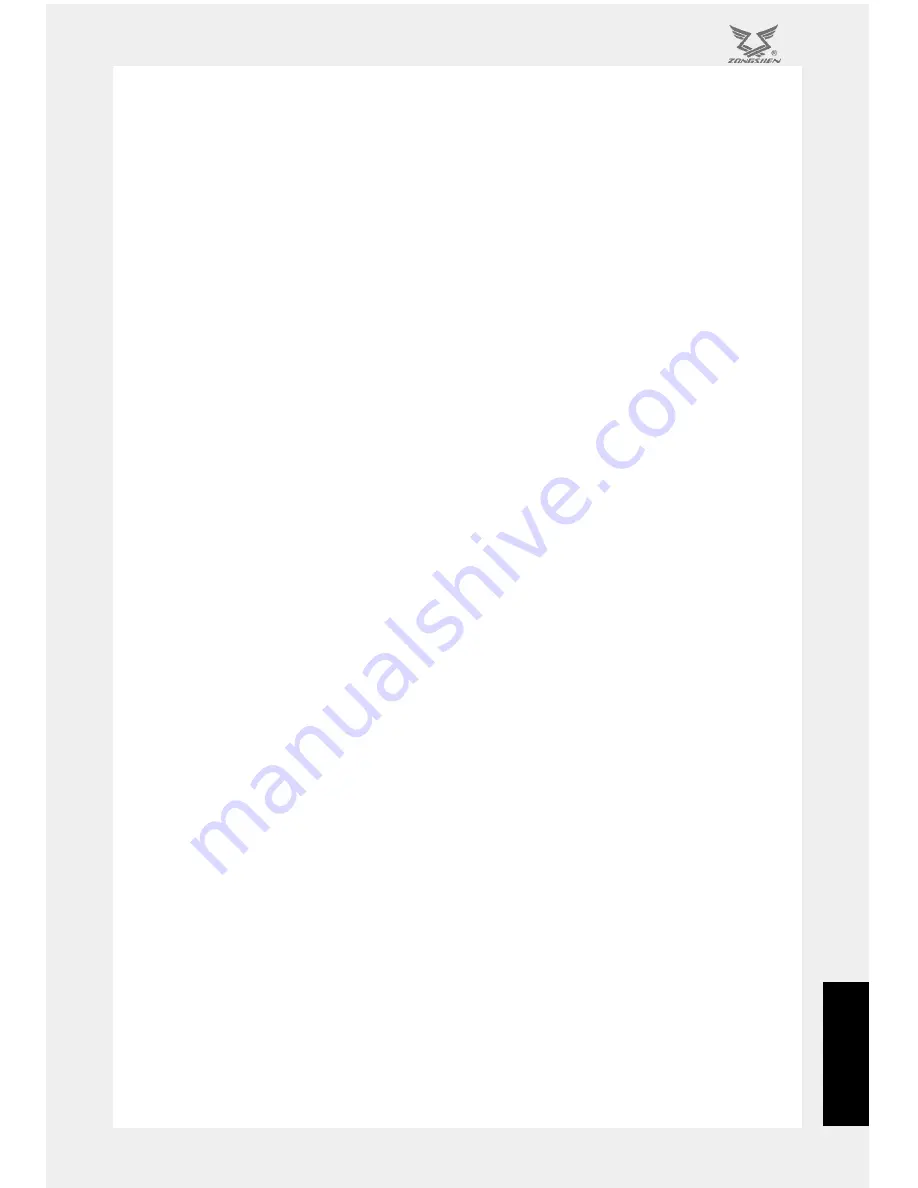
7
ENGLISH
a layer of red lead, and the machine element should be ground to match a plate, standard part or finished
part. The resulted high points are the objects to be scraped. After repeated grinding and scraping, high
points and sub-high points are gradually scraped, so that the scraped element has increased contact points
on the surface to form the required shape and achieve the fine fit.
[2.]Grinding
Grinding is to raze a thin metal layer from the surface of a machine element by use of grinding tools,
so that the surface has a precise size, accurate geometry and very low surface roughness. This is the most
finish machining method adopted to process the surface of a machine element. It can be divided into face
grinding, bore grinding and cylindrical grinding. The face grinding adopts a plate as grinding tool, while
the bore grinding adopts a grinding rod. In the maintenance process, grinding methods are often applied to
process crankcase planes and inner bores in connecting rod reducers.
[3.]Riveting and jointing
Riveting is to connect two or more machine elements together by use of rivets. The method of riveting
is widely used in the maintenance process, such as the riveting of the clutch sheet and the riveting of
various assembling units. According to its application, riveting can be divided into fixed riveting, movable
riveting and stitched riveting.
Jointing is to joint two metal faces firmly together by use of soldering tools and soldering flux. It is
widely used in the maintenance process.
Such as the recovery of cracks on solder joints of the main frame and other parts.
[4.]Drilling and reaming
Drilling is a method to process holes in a machine element or material with a drill bit.
The main drilling equipment and tools are radial drilling machines, bench drills, electric hand drills,
twist gimlets and fixtures. The purpose of reaming is to improve the accuracy of holes on a machine
element and reduce the surface roughness of holes, and reamers are used for hole finish machining.
Reaming can improve the accuracy of fit between a hole and a shaft up to Level 6 to Level 8. The main
reaming tools are reamers. Commonly used reamers include fixed hand reamers, adjustable reamers and
conical hand reamers, etc. A basic hole must be drilled before reaming. Drilling a basic hole is to leave a
proper processing allowance for the reaming process according to the accuracy requirements of a formed
hole required for a machine element.
[5.]Thread tapping and thread die cutting
Thread tapping is to process internal threads with screw taps, while thread die cutting is to ream
external threads with threading dies. Screw taps are the main tool for thread tapping. A set of hand screw
taps is usually composed of two pieces (head tap and second-tap). The two taps are different in the angle
of the cutting part: the head tap is smaller and the second-tap is bigger in angle. A chamfered basic hole
must be drilled before thread tapping. The diameter of the drill bit used for drilling the basic hole can be
referred to a specific table or calculated by the following formula:
Drilling diameter = thread external diameter -1.1mm
×
pitch (applicable to pig iron, bronze, etc.).
Drilling diameter = thread external diameter -1.2mm
×
pitch (applicable to steel, brass, etc.)
When tapping, the head tap is tapped along the chamfered basic hole, and retreats after the tapping.
Then tap with a second-tap to shape the thread.
Threading dies are the main tool for thread die cutting. Threading dies are classified into fixed,
adjustable and movable types. Fixed dies are commonly used, that is, circular dies. For the thread die
cutting, threading dies and bars in corresponding diameters should be selected based on the required
materials, thread diameters and pitches. Dimension relations can be found in a special table or calculated
by the following formula:
Bar diameter = thread external diameter -0.13mm
×
pitch
Before the thread die cutting, an end of the bar need to be chamfered (15
°
~ 20
°
). The minimum
diameter at the cone angle should be less than the internal diameter of the thread so that the die and bar
is vertical, and facilitate aligned cutting.
[6.]Correction
Corrections intend to eliminate unevenness defects on plates, bars or cylindrical machine elements.
Corrections enable plastic deformation of machine elements. Therefore, only metal parts of high plasticity
(such as low carbon steel, red copper, etc.) can be directly corrected. Metal parts with higher carbon
content can be corrected after being annealed. Correction methods include twisting method, stretching
method, bending method and extending method.
[7.]Bonding














































